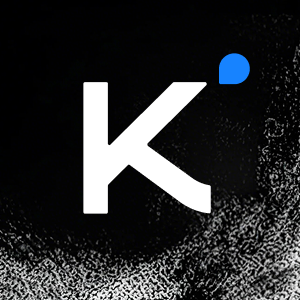FrameGraph 项目教程
2024-09-24 17:33:02作者:胡唯隽
1. 项目介绍
FrameGraph 是一个基于 Vulkan 的抽象层,旨在简化 Vulkan 上的原型设计和图形引擎的开发。它通过将帧表示为一个任务图来实现这一目标,从而隐藏了所有同步、内存分配和其他 Vulkan 所需的样板代码。FrameGraph 的设计追求高性能,同时不牺牲易用性。它内置了验证功能,结合 Vulkan 的验证层,可以帮助开发者快速发现和修复错误。
主要特性
- 多线程命令缓冲区构建和提交
- 简单的 API 设计
- 隐藏内存分配、主机与设备之间的传输、同步等复杂操作
- 支持 RTX 扩展、异步计算和异步传输队列
- 所有渲染任务都是无状态的
支持的平台
- Windows (MSVC 2017, 2019)
- Linux (GCC 8, Clang 9)
- Android (Clang)
2. 项目快速启动
环境准备
- 安装 CMake 3.10 或更高版本
- 安装 Vulkan SDK
- 安装 VulkanMemoryAllocator
- 安装 glfw 或 SDL2
- 安装 glslang
构建项目
-
克隆项目仓库:
git clone https://github.com/azhirnov/FrameGraph.git cd FrameGraph -
生成构建文件:
cmake -S . -B build -
编译项目:
cmake --build build
运行示例
进入构建目录并运行示例程序:
cd build
./FrameGraph-Samples
3. 应用案例和最佳实践
案例1:多线程渲染
FrameGraph 支持多线程命令缓冲区构建和提交,可以显著提高渲染性能。以下是一个简单的多线程渲染示例:
void RenderThread::run() {
while (!stopRequested) {
auto commandBuffer = frameGraph.beginCommandBuffer();
// 构建命令缓冲区
frameGraph.endCommandBuffer(commandBuffer);
frameGraph.submitCommandBuffer(commandBuffer);
}
}
案例2:异步计算
FrameGraph 支持异步计算队列,可以在不影响渲染性能的情况下执行计算任务。以下是一个异步计算的示例:
void AsyncComputeTask::execute() {
auto commandBuffer = frameGraph.beginCommandBuffer(QueueType::Compute);
// 执行计算任务
frameGraph.endCommandBuffer(commandBuffer);
frameGraph.submitCommandBuffer(commandBuffer);
}
4. 典型生态项目
VulkanMemoryAllocator
VulkanMemoryAllocator 是一个高效的 Vulkan 内存管理库,FrameGraph 依赖于它来管理内存分配。
glfw 或 SDL2
glfw 和 SDL2 是常用的窗口管理和输入处理库,FrameGraph 使用它们来创建窗口和处理用户输入。
glslang
glslang 是一个 GLSL 编译器,FrameGraph 使用它来编译 GLSL 着色器代码。
SPIRV-Tools
SPIRV-Tools 提供了 SPIR-V 的优化和验证工具,FrameGraph 使用它来优化和验证生成的 SPIR-V 代码。
通过以上模块的介绍,您应该能够快速上手 FrameGraph 项目,并了解其在实际应用中的使用方法和最佳实践。
登录后查看全文
热门项目推荐
 AutoGLM-Phone-9BAutoGLM-Phone-9B是基于AutoGLM构建的移动智能助手框架,依托多模态感知理解手机屏幕并执行自动化操作。Jinja00
AutoGLM-Phone-9BAutoGLM-Phone-9B是基于AutoGLM构建的移动智能助手框架,依托多模态感知理解手机屏幕并执行自动化操作。Jinja00 Kimi-K2-ThinkingKimi K2 Thinking 是最新、性能最强的开源思维模型。从 Kimi K2 开始,我们将其打造为能够逐步推理并动态调用工具的思维智能体。通过显著提升多步推理深度,并在 200–300 次连续调用中保持稳定的工具使用能力,它在 Humanity's Last Exam (HLE)、BrowseComp 等基准测试中树立了新的技术标杆。同时,K2 Thinking 是原生 INT4 量化模型,具备 256k 上下文窗口,实现了推理延迟和 GPU 内存占用的无损降低。Python00
Kimi-K2-ThinkingKimi K2 Thinking 是最新、性能最强的开源思维模型。从 Kimi K2 开始,我们将其打造为能够逐步推理并动态调用工具的思维智能体。通过显著提升多步推理深度,并在 200–300 次连续调用中保持稳定的工具使用能力,它在 Humanity's Last Exam (HLE)、BrowseComp 等基准测试中树立了新的技术标杆。同时,K2 Thinking 是原生 INT4 量化模型,具备 256k 上下文窗口,实现了推理延迟和 GPU 内存占用的无损降低。Python00 GLM-4.6V-FP8GLM-4.6V-FP8是GLM-V系列开源模型,支持128K上下文窗口,融合原生多模态函数调用能力,实现从视觉感知到执行的闭环。具备文档理解、图文生成、前端重构等功能,适用于云集群与本地部署,在同类参数规模中视觉理解性能领先。Jinja00
GLM-4.6V-FP8GLM-4.6V-FP8是GLM-V系列开源模型,支持128K上下文窗口,融合原生多模态函数调用能力,实现从视觉感知到执行的闭环。具备文档理解、图文生成、前端重构等功能,适用于云集群与本地部署,在同类参数规模中视觉理解性能领先。Jinja00 HunyuanOCRHunyuanOCR 是基于混元原生多模态架构打造的领先端到端 OCR 专家级视觉语言模型。它采用仅 10 亿参数的轻量化设计,在业界多项基准测试中取得了当前最佳性能。该模型不仅精通复杂多语言文档解析,还在文本检测与识别、开放域信息抽取、视频字幕提取及图片翻译等实际应用场景中表现卓越。00
HunyuanOCRHunyuanOCR 是基于混元原生多模态架构打造的领先端到端 OCR 专家级视觉语言模型。它采用仅 10 亿参数的轻量化设计,在业界多项基准测试中取得了当前最佳性能。该模型不仅精通复杂多语言文档解析,还在文本检测与识别、开放域信息抽取、视频字幕提取及图片翻译等实际应用场景中表现卓越。00 GLM-ASR-Nano-2512GLM-ASR-Nano-2512 是一款稳健的开源语音识别模型,参数规模为 15 亿。该模型专为应对真实场景的复杂性而设计,在保持紧凑体量的同时,多项基准测试表现优于 OpenAI Whisper V3。Python00
GLM-ASR-Nano-2512GLM-ASR-Nano-2512 是一款稳健的开源语音识别模型,参数规模为 15 亿。该模型专为应对真实场景的复杂性而设计,在保持紧凑体量的同时,多项基准测试表现优于 OpenAI Whisper V3。Python00 GLM-TTSGLM-TTS 是一款基于大语言模型的高质量文本转语音(TTS)合成系统,支持零样本语音克隆和流式推理。该系统采用两阶段架构,结合了用于语音 token 生成的大语言模型(LLM)和用于波形合成的流匹配(Flow Matching)模型。 通过引入多奖励强化学习框架,GLM-TTS 显著提升了合成语音的表现力,相比传统 TTS 系统实现了更自然的情感控制。Python00
GLM-TTSGLM-TTS 是一款基于大语言模型的高质量文本转语音(TTS)合成系统,支持零样本语音克隆和流式推理。该系统采用两阶段架构,结合了用于语音 token 生成的大语言模型(LLM)和用于波形合成的流匹配(Flow Matching)模型。 通过引入多奖励强化学习框架,GLM-TTS 显著提升了合成语音的表现力,相比传统 TTS 系统实现了更自然的情感控制。Python00 Spark-Formalizer-X1-7BSpark-Formalizer 是由科大讯飞团队开发的专用大型语言模型,专注于数学自动形式化任务。该模型擅长将自然语言数学问题转化为精确的 Lean4 形式化语句,在形式化语句生成方面达到了业界领先水平。Python00
Spark-Formalizer-X1-7BSpark-Formalizer 是由科大讯飞团队开发的专用大型语言模型,专注于数学自动形式化任务。该模型擅长将自然语言数学问题转化为精确的 Lean4 形式化语句,在形式化语句生成方面达到了业界领先水平。Python00
最新内容推荐
电脑PC网易云音乐免安装皮肤插件使用指南:个性化音乐播放体验 开源电子设计自动化利器:KiCad EDA全方位使用指南 Jetson TX2开发板官方资源完全指南:从入门到精通 昆仑通态MCGS与台达VFD-M变频器通讯程序详解:工业自动化控制完美解决方案 基恩士LJ-X8000A开发版SDK样本程序全面指南 - 工业激光轮廓仪开发利器 PhysioNet医学研究数据库:临床数据分析与生物信号处理的权威资源指南 QT连接阿里云MySQL数据库完整指南:从环境配置到问题解决 Python案例资源下载 - 从入门到精通的完整项目代码合集 2022美赛A题优秀论文深度解析:自行车功率分配建模的成功方法 TJSONObject完整解析教程:Delphi开发者必备的JSON处理指南
项目优选
收起
deepin linux kernel
C
24
9
Ascend Extension for PyTorch
Python
223
246
暂无简介
Dart
672
157
本项目是CANN提供的数学类基础计算算子库,实现网络在NPU上加速计算。
C++
663
313
React Native鸿蒙化仓库
JavaScript
262
324
Nop Platform 2.0是基于可逆计算理论实现的采用面向语言编程范式的新一代低代码开发平台,包含基于全新原理从零开始研发的GraphQL引擎、ORM引擎、工作流引擎、报表引擎、规则引擎、批处理引引擎等完整设计。nop-entropy是它的后端部分,采用java语言实现,可选择集成Spring框架或者Quarkus框架。中小企业可以免费商用
Java
9
1
🎉 (RuoYi)官方仓库 基于SpringBoot,Spring Security,JWT,Vue3 & Vite、Element Plus 的前后端分离权限管理系统
Vue
1.2 K
655
🔥LeetCode solutions in any programming language | 多种编程语言实现 LeetCode、《剑指 Offer(第 2 版)》、《程序员面试金典(第 6 版)》题解
Java
64
19
openGauss kernel ~ openGauss is an open source relational database management system
C++
160
218
TorchAir 支持用户基于PyTorch框架和torch_npu插件在昇腾NPU上使用图模式进行推理。
Python
330
137